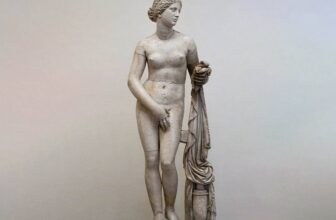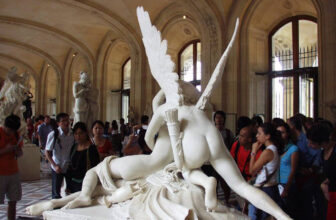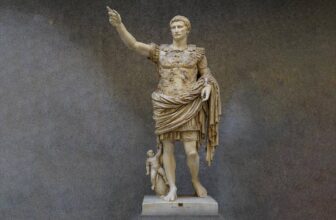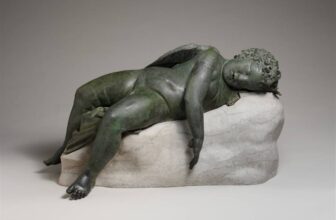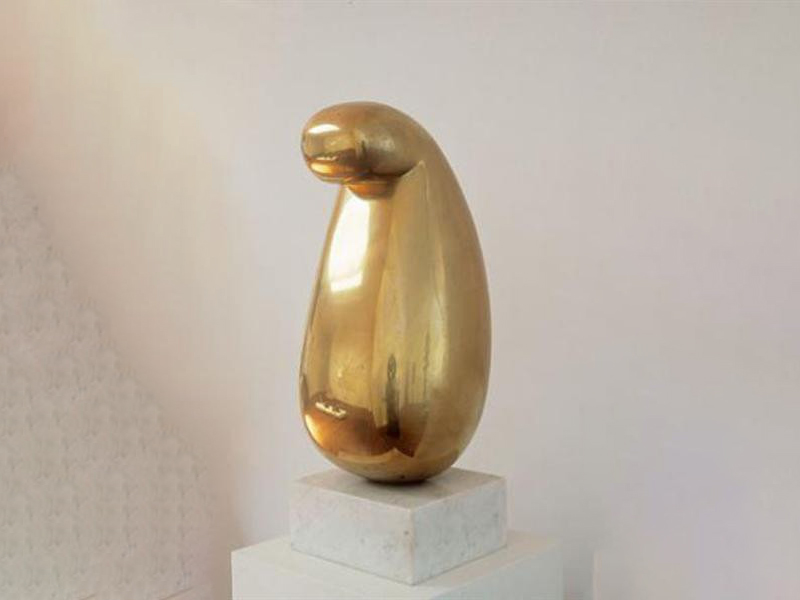
What Is Isamu Noguchi’s Most Famous Art Sculpture
In the peaceful of a serene Japanese garden or the grandeur of a bustling museum gallery, one may encounter a piece of art that doesn’t shout, but whispers. A fluid shape carved in stone, a paper lantern floating in space, or a polished bronze that feels ancient and futuristic all at once. These are the quiet yet profound hallmarks of Isamu Noguchi, one of the 20th century’s most revolutionary artists.
Born of two worlds, American and Japanese, Noguchi was a boundary breaker, a hybrid visionary who blurred the lines between sculpture, design, architecture, and landscape. He didn’t just sculpt objects; he sculpted space, philosophy, and time itself.
This is the story of Isamu Noguchi, the artist, his sculptures, his iconic creations, and the legacy that continues to elevate the value and significance of his work today.
How Did Isamu Noguchi Create His Art Sculptures?
Isamu Noguchi’s process was as multifaceted as his identity. Born in 1904 to an American writer and a Japanese poet, Noguchi grew up oscillating between cultures. This constant movement and cultural duality shaped how he approached the world, and art.
At first, Noguchi studied medicine, but his growing interest in sculpture led him to apprentice with Gutzon Borglum, the sculptor behind Mount Rushmore. Later, he would train in Paris under Constantin Brâncuși, one of the pioneers of abstract modernism. Brâncuși taught Noguchi the power of essence over detail, encouraging the young artist to carve directly into stone and wood, letting the material speak.
Noguchi embraced a direct carving technique, often working with stone, wood, clay, and bronze. His materials weren’t just mediums, they were collaborators. He believed in the inherent spirit of stone, for example, and would adapt his designs as he uncovered natural fractures or grains in the material. This sensitivity to material gave his sculptures a living quality.
His process began with sketches, but these were often loose and organic. From there, he would move to small maquettes, scale models, that helped him feel out the form before committing to the full-sized work. He often worked on-site, especially when designing large public works or landscapes, blending the sculpture into the environment.
He once said, “When an artist stops being a child, he stops being an artist.” This childlike curiosity and openness led him to continually evolve, incorporating influences from Japanese Zen gardens, Native American earthworks, and even space-age design.
Though Noguchi created hundreds of works across many mediums, one piece often rises above the rest in public consciousness:
“Red Cube” (1968)
Located in New York City‘s Financial District, “Red Cube” is one of Noguchi’s most iconic sculptures. It’s a giant, tilted red cube, simple, yet profoundly impactful, resting on one corner with a circular hole through its center. The stark geometric shape is juxtaposed against the steel and glass skyscrapers surrounding it, creating a dynamic tension.
This cube is a masterpiece in spatial awareness. Its apparent simplicity masks deep complexity. By rotating the cube and piercing it with a cylindrical void, Noguchi challenges the viewer’s perception of balance, gravity, and form. The artwork interacts with the architecture around it, drawing attention to the space it inhabits.
Other notable works include:
“Sunken Garden” (1964) at Chase Manhattan Plaza – A subterranean garden of stone and water that becomes a meditation on absence and space.
“Black Sun” (1969) – A polished basalt ring sculpture in Seattle, through which one can frame the Space Needle or Mount Rainier depending on perspective.
“Octetra” (1968) – A modular playground sculpture that is both art and architecture.
“The Spirit of the Lima Bean” (1981) – A towering bronze sculpture in Los Angeles’ Civic Center, drawing from agricultural symbolism.
However, his Akari Light Sculptures, though smaller and mass-produced, may be his most globally recognizable creations. These delicate paper lanterns have become synonymous with minimalist elegance and are now design classics.
How Much Are Isamu Noguchi’s Art Sculptures Worth?
Isamu Noguchi’s sculptures have become highly valuable assets in the art world. Their worth depends on several factors: size, material, provenance, and rarity. While some pieces are found in public installations and museums, others remain in private collections and auction houses.
Auction Prices & Market Value
In 2014, Noguchi’s “Undine” (a bronze piece from 1925) sold at Sotheby’s for over $4 million, a record-breaking sale.
Smaller works, such as stone or wood maquettes, regularly sell for $100,000 to $500,000.
His public art commissions and permanent installations are considered priceless in cultural value, though they represent multimillion-dollar investments by cities and institutions.
The art market values Noguchi not just for his form, but for his fusion of East and West, his philosophical depth, and his enduring relevance in design and sculpture. As minimalism and organic modernism continue to influence contemporary aesthetics, the demand for Noguchi’s work remains strong.
Why Are Noguchi Lamps So Expensive?
At first glance, the Akari light sculptures, delicate paper lanterns crafted from washi paper and bamboo, might appear simple or even humble. But in reality, they represent a symphony of craftsmanship, design philosophy, and cultural fusion.
Here’s why they command high prices:
Handmade in Japan
Noguchi partnered with traditional Japanese lantern makers in Gifu, Japan, to create Akari lamps. Each lamp is handmade using traditional techniques, not mass-manufactured. The precision and time required to produce each one drives up its value.Philosophical Design
“Akari” means “light” as in both illumination and weightlessness. Noguchi believed light should not be harsh or mechanical, but soft and living. His lamps are sculptures of light, aiming to bring calm and harmony into a space.Timeless Modernism
Though created in the 1950s, the Akari series remains a staple of modern interior design. Designers and collectors alike value the timelessness of their form, which aligns with both minimalist and contemporary aesthetics.Authenticity and Branding
Only official Noguchi Foundation-endorsed Akari lamps are considered authentic. They carry a red sun-and-moon logo and are priced accordingly. Imitations exist, but connoisseurs seek the real thing.
Prices range from $200 for small table lamps to $2,000+ for larger ceiling or floor pieces. Rare or discontinued models can fetch much more in collector circles.
Where Are Isamu Noguchi’s Art Sculptures Located?
Noguchi’s work is global, but certain cities and institutions have become custodians of his legacy.
1. The Noguchi Museum – New York City
Located in Long Island City, Queens, this museum was established by Noguchi himself in 1985. It houses a comprehensive collection of his sculptures, drawings, and Akari lights, as well as rotating exhibitions. The garden is a living example of his landscape philosophy.
2. MoMA – New York City
The Museum of Modern Art owns several Noguchi sculptures and furniture designs, often displayed as part of their permanent collection on modern sculpture and design.
3. The Isamu Noguchi Garden Museum – Takamatsu, Japan
Less known but deeply intimate, this museum in Japan was built on the site of Noguchi’s studio and residence. It provides a deeper look into his relationship with Japanese stone and culture.
4. UNESCO Headquarters – Paris
Noguchi’s “Garden of Peace” is a contemplative courtyard sculpture installation created for UNESCO’s Paris headquarters in the 1950s, merging sculpture and landscape to promote harmony.
5. Seattle Art Museum & Olympic Sculpture Park
Home to his “Black Sun”, this iconic basalt sculpture overlooks Puget Sound and has become a favorite among locals and tourists alike.
6. Los Angeles Civic Center
His massive bronze, “The Spirit of the Lima Bean,” resides here, paying tribute to LA’s agricultural roots in an abstract, poetic form.
7. Yale University
Noguchi designed the landscape and sculpture garden for the Beinecke Rare Book & Manuscript Library, blending architecture and sculpture.
8. Various Public Parks and Playgrounds
Noguchi believed play was essential to human development. His “Play Mountain” concept, never fully realized in his lifetime, is now echoed in playgrounds like Moerenuma Park in Sapporo, Japan, which was completed posthumously based on his vision.
The Enduring Legacy of Isamu Noguchi
What made Noguchi unique wasn’t just his form, but his philosophy. He saw sculpture not as a static object but as an environmental act, something to be experienced, walked through, touched, lit, or even played on. He sculpted time as much as space, and emotion as much as material.
Isamu Noguchi died in 1988, but his art continues to live on in museums, public parks, and homes across the world. He is not just remembered as a sculptor, but as a bridge between cultures, disciplines, and epochs. From granite monoliths to floating paper lanterns, his work reminds us that art can be functional, spiritual, playful, and profound, all at once.
In an age of speed and spectacle, Noguchi’s work invites us to pause, reflect, and reconnect, with nature, with each other, and with ourselves.
Isamu Noguchi was more than an artist, he was a philosopher of form. His sculptures, light designs, and public works continue to inspire generations of artists, designers, and thinkers around the world.
From the bold geometry of the “Red Cube” to the weightless poetry of the Akari lamps, Noguchi left us with a portfolio that defies categorization and embraces harmony. His works are not relics of the past but living presences, quietly shaping the spaces we inhabit and the lives we lead.
So the next time you see a softly glowing Akari lamp, or pass by an enigmatic stone shape in a plaza, know that you are in the presence of Noguchi’s enduring whisper, a message of balance, beauty, and peace. image/wikiart.org
